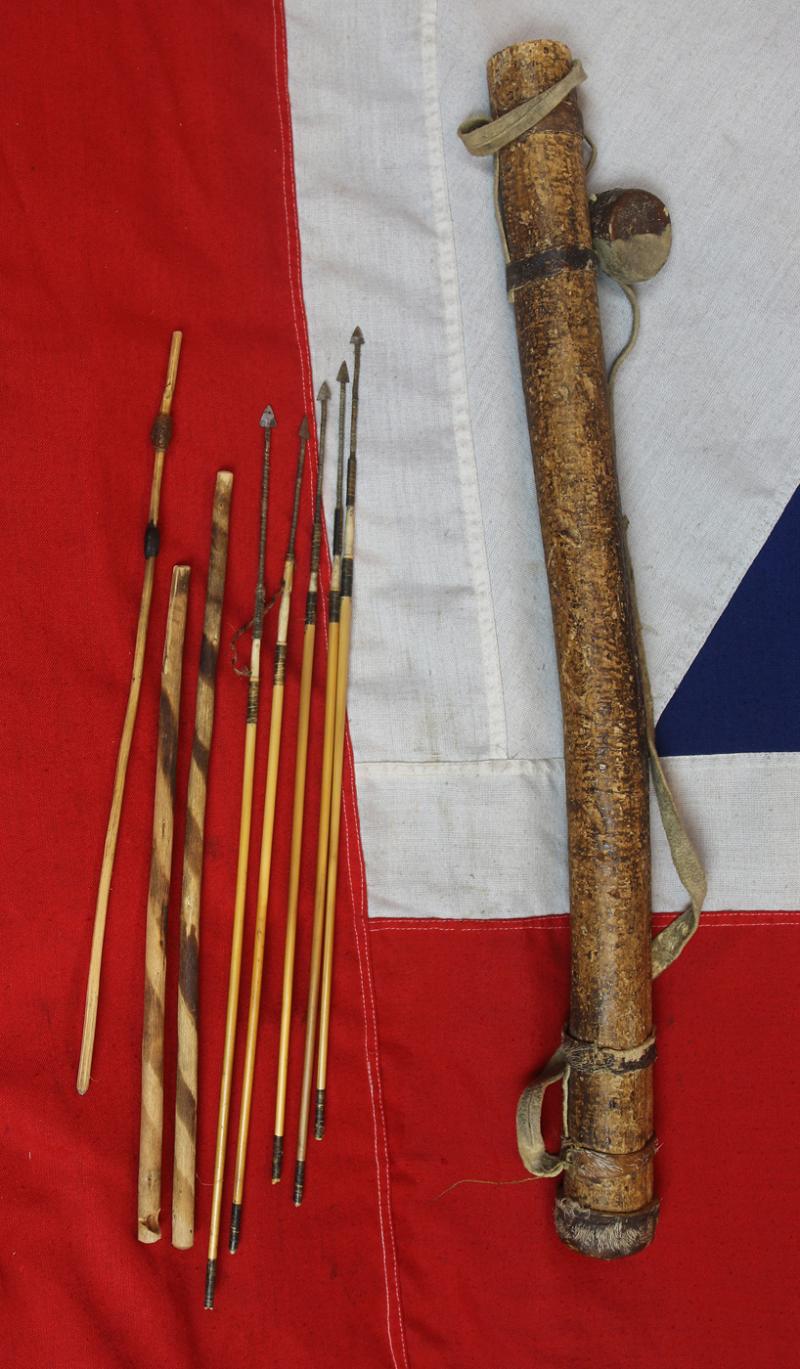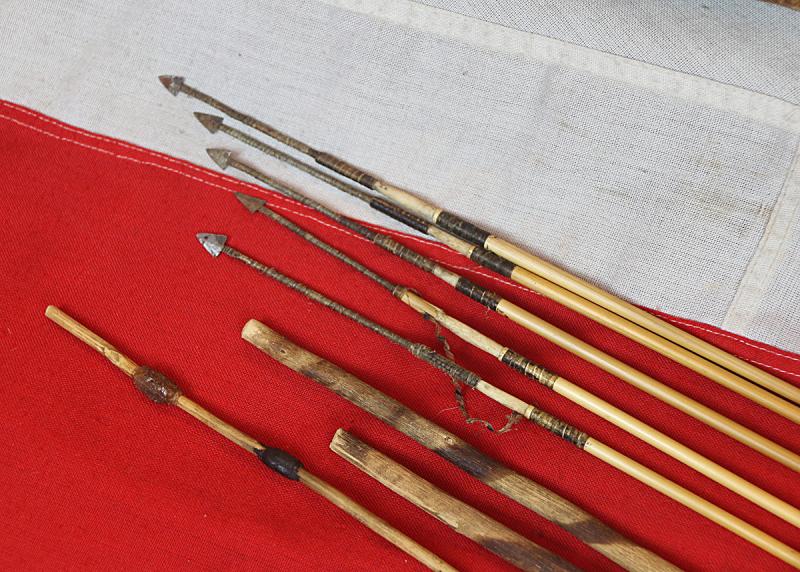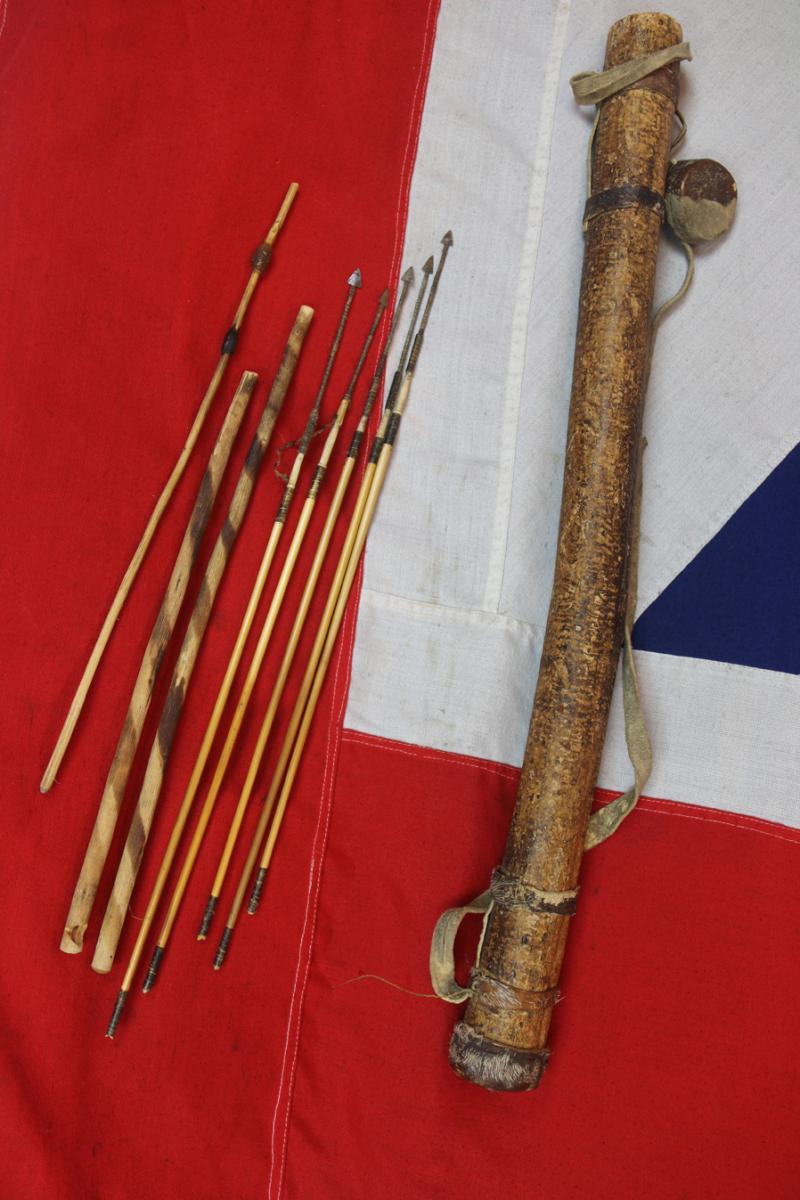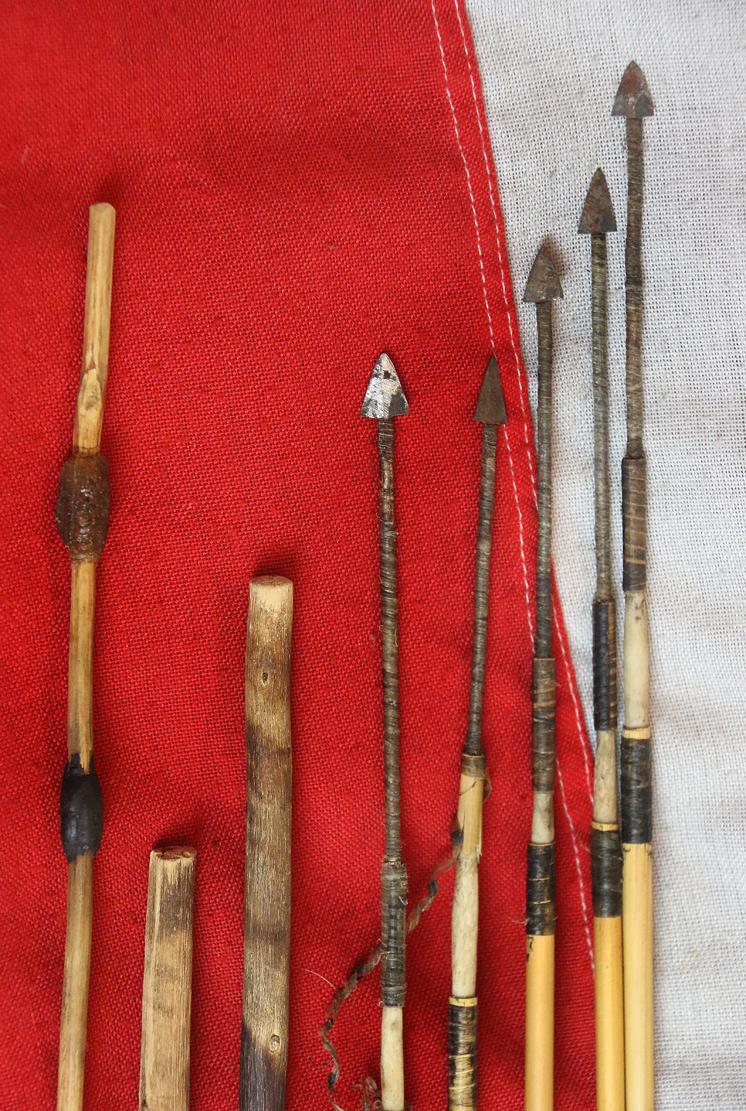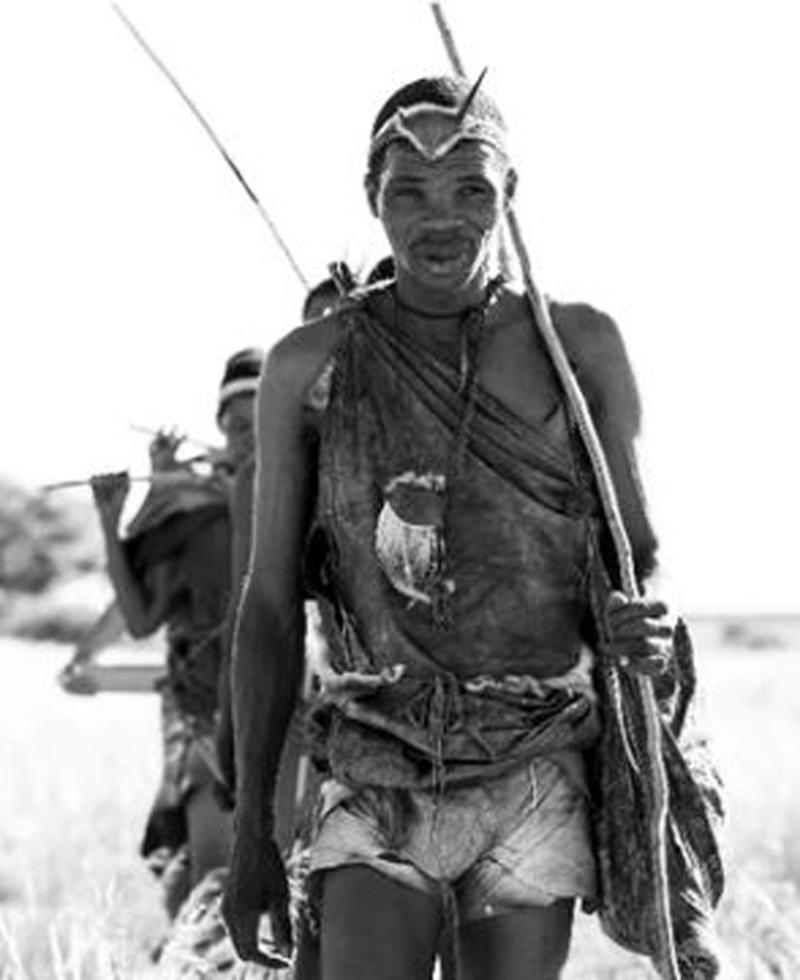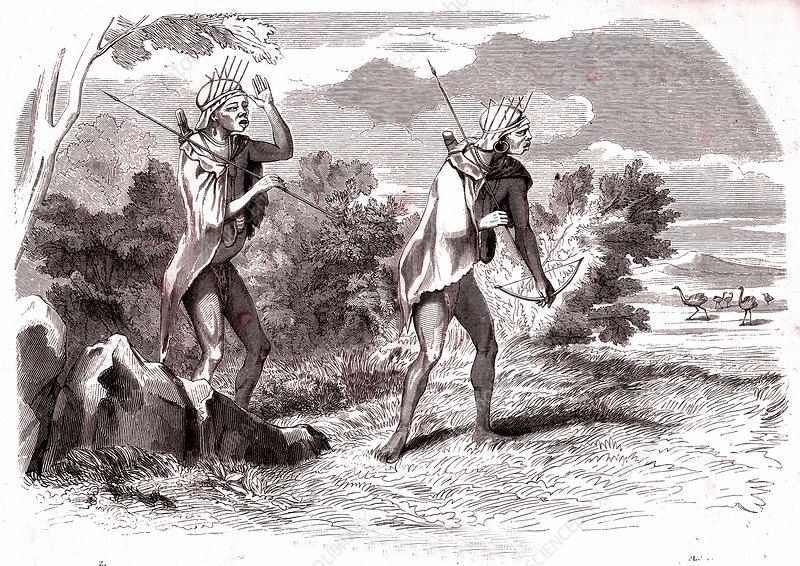A Rare African Bushman’s Tribal Poison Arrows and Tree Branch Leather Capped Quiver & Poison Stick
Acquired with, and displayed with, in the gallery, the poison stick, {picture 4 in the gallery} but the deadly poison stick we cannot sell with the bushman’s arrows and quiver. 5 arrows with iron heads with long hafts, two fire sticks and one poison stick***
Like the notorious and more well known South American Curare paralytic poison, { extracted from the plant Strychnos toxifera} the African poisons are similarly extremely effective in their task.
Along the Acokanthera sp. the most popular three types for the extraction of arrow poison were, A. oblongiflora, B. oppositifolia, and C. schimperi in general known as Bushman's poison, poison bush, poison tree or winter-sweet.
All parts of the plant can be used. Stems, roots, or even leaves, but wood chips are preferred, they are put in a large container, filled with water and boiled for up to 12 hours. Additional water is added in case the water evaporates before this time period is attained. Once all the water has evaporated, a thick sticky black substance is left in the container.
The plant parts are discarded. This substance is then cut into pieces, put into containers or wrapped and stored away from people where it can later be mixed with water or tree gum to form a thick paste which can be applied to the arrows. The poison paste type gum can them be applied to a poison stick and carried in the quiver and added to the arrow head when required. This poison stick has two such gum like deposits. One black the other paler brown. This would be for the bushman to know which poison was which, for different purposes and strengths for example. This poisons are extremely poisonous and can kill a 50 kg animal with ease in less than 20 minutes.
Although the Strophantus kombe (Zambezi tail flower or Poison Rope) was the most used of the species, Strophantus amboensis (Omuhundure), Strophanthus hispidus and Strophantus speciosus (Common Poison rope) was also used. The poison derived from S. hispidus was known as inee or onaye and was used mostly at the west coast of Africa (Senegal, Gambia, Guinea and Gabon), S. gratus in equatorial Africa, S. kombe was used mostly in central and east Africa as far south as the Zambezi, S. amboensis southern Angola and northern Namibia and S. speciosus in South Africa.
The seeds are collected, crushed and mix with saliva or other additives to form a paste, the paste was then left in strong sunlight for several hours before use. This poison can literally kill an average man in 5 to 10 minutes, a big animal in 20 minutes.
The Bushman would despatch his arrows with a basic stick bow which would effectively be disposable and easy to replace if lost or broken. Unlike the arrows, that require forged iron heads, and thus black-smithing.
An article from the New York Times, published March 15th 1964, un-edited;
If the victims can tell about it at all, they say that for a split second they heard a high, faint whistling, then felt a sharp, searing blow, as though struck by a hot blade. This is how a deadly arrow sounds and feels, and if the arrowhead is poisoned, the last moments can bring excruciating pain and sometimes madness.
In the past few weeks, the poisoned arrow had claimed a number of victims, including an American woman missionary, in the terrorized Kwilu Province of the Congo. Guerrilla rebels there killed the Congolese Army Chief of Staff himself with a poisoned arrow that sped out of the undergrowth and felled him as he led a column of reinforcements along a jungle road.
The reason weapons so primitive as bows and arrows survive in an age of light, efficient, rapid‐fire small arms is that they are ideally suited to the stealth of guerrilla warfare. (Some special United States troops are being taught jungle archery.) Both the bow and arrow and a sister weapon, the dart‐hurling blowpipe, are nearly silent and thus not only can take their victims by surprise but do not reveal their firing positions, as with shots discharged by explosives. Aimed by experts, poisoned arrows and darts can be as deadly as bullets and, depending on the poison, considerably less merciful.
POISONED arrows have been used principally by African and South American tribes, and poisoned darts by tribes of the Malay Peninsula and Archipelago. Poisoned arrows were not unknown to the North American Indian, however. The Osage tribesmen of what is now Missouri and Arkansas made poison by enticing a rattlesnake to bite a piece of liver which was then diced and pressed into clamshells for preservation. In wartime the shells were entrusted to the squaws, who carried them to the battlefield and helped the braves dip their arrows.
Compare this businesslike approach with the traditional rituals of African tribes preparing poison for war. Death was presumed wingless until a medicine man had reeled off incantations over simmering pots, though it may be noted that the men were careful to let the women have a major share of the work right from the start. It was said that the casualties among the women were more numerous than among the warriors on the battlefield.
THE kind of poison varied from tribe to tribe and from region to region. In less inhibited southern Africa, tribes made a fanciful poison of scor pions and spiders ground with lethal plant juice and snake venom, whereas in the more cultivated regions of the north, a vegetal poison was considered amply fatal. In between were other concoctions. Pygmies endorsed poisons derived from powdered red ants. The bushmen of Bechuanaland still favor a poison made by crushing the pupae of beetles found among the roots of infested marula trees.
Reference *Special Conservation* Item, see info page.
*** Despite being brought to the UK quite unknowingly several generations ago, the poison stick cannot be sold by us, and thus included with the arrows, for obvious health and safety reasons, as it is restricted for sale by the 'Poisons Act of 1972'
Code: 24674
475.00 GBP

